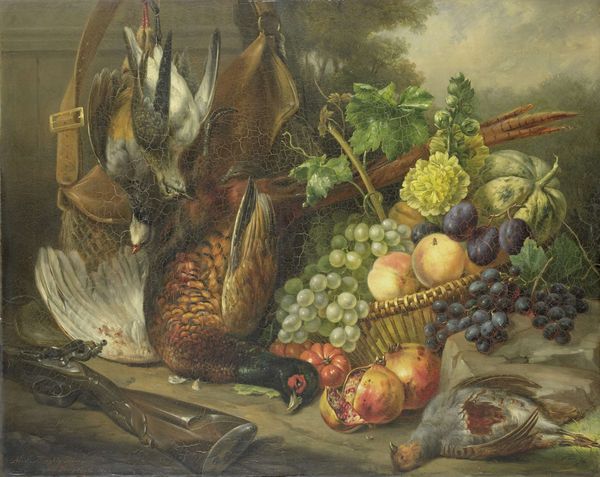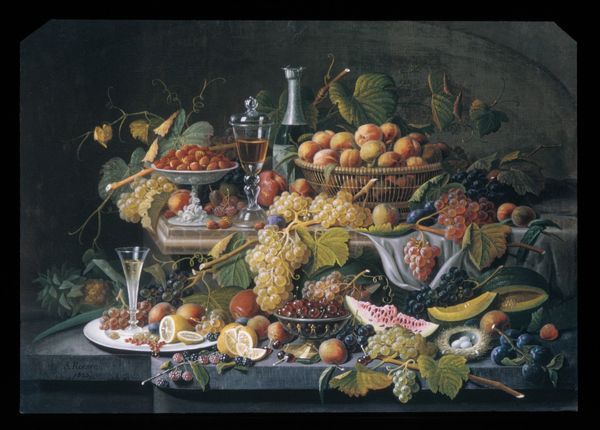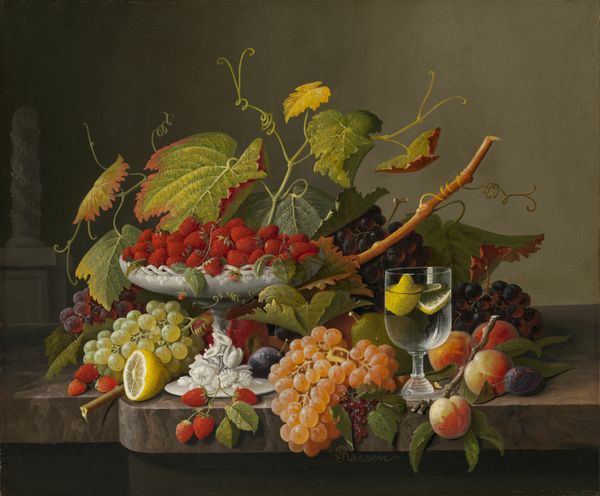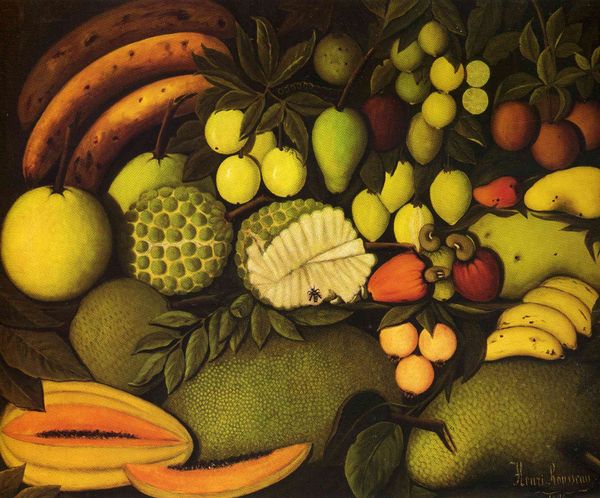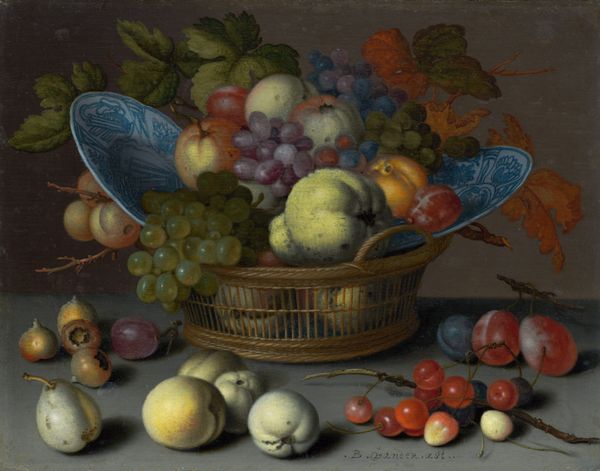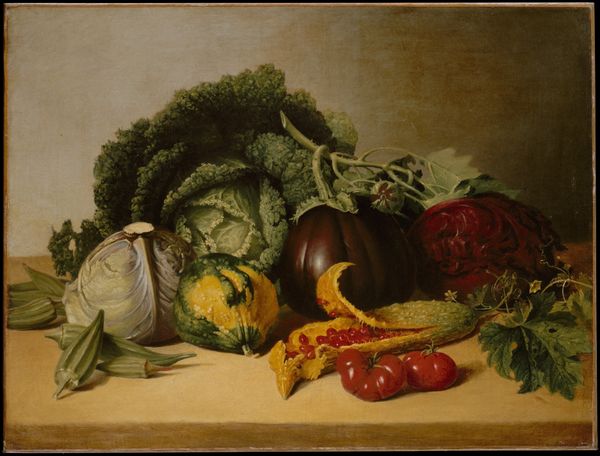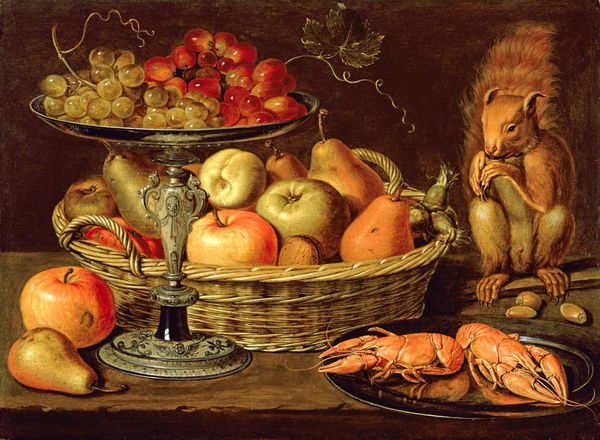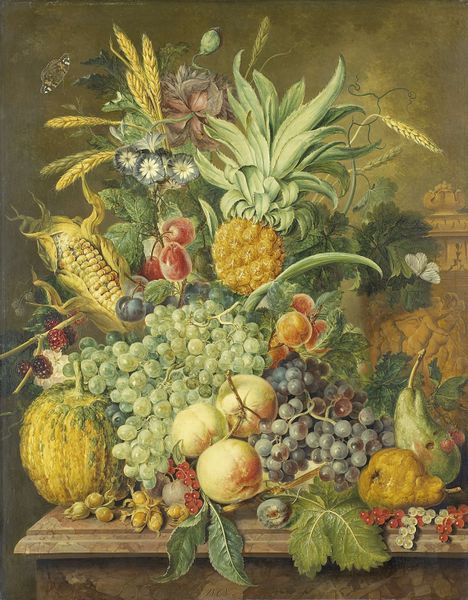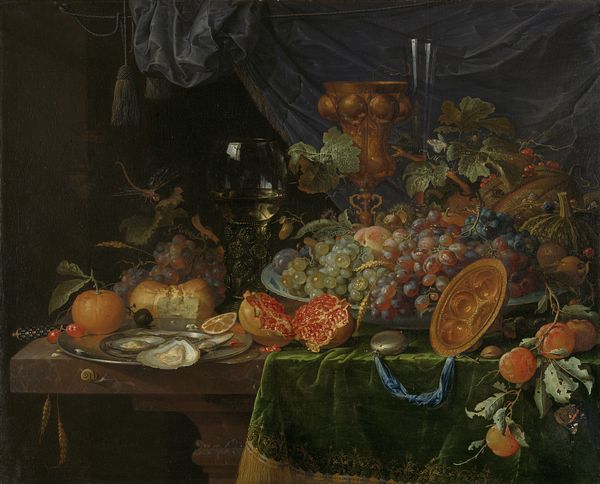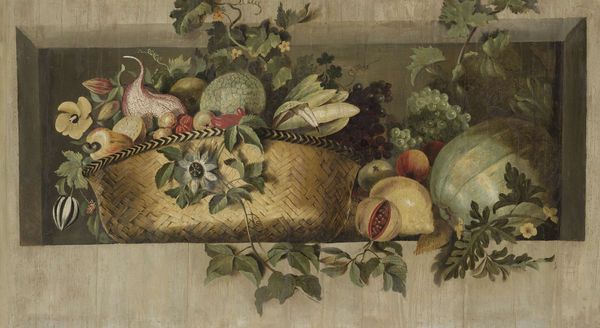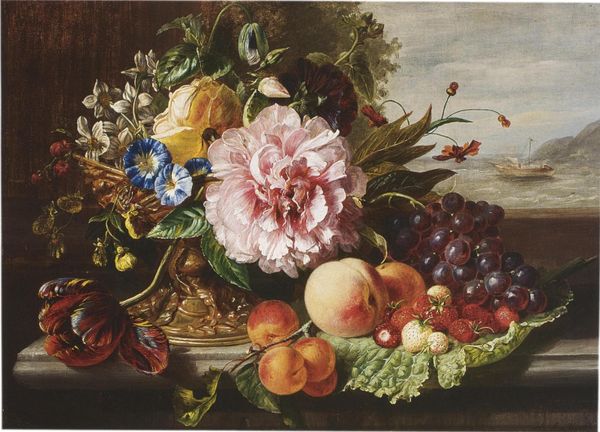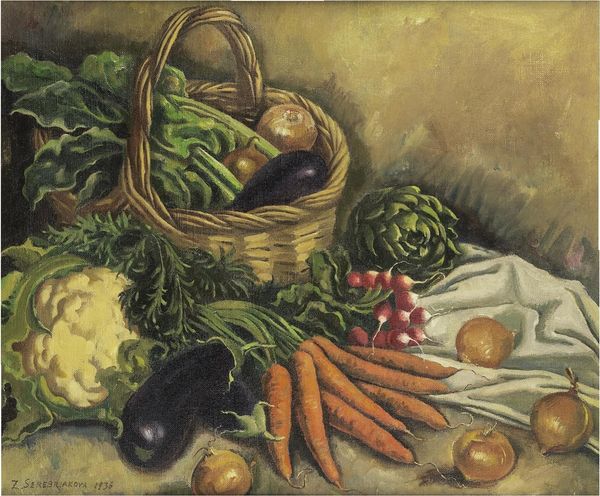
Market woman at a vegetable stand 1567
0:00
0:00
pieteraertsen
Staatliche Museen zu Berlin, Berlin, Germany
painting, oil-paint
#
portrait
#
narrative-art
#
painting
#
oil-paint
#
mannerism
#
oil painting
#
genre-painting
Copyright: Public domain
Editor: Pieter Aertsen’s "Market Woman at a Vegetable Stand," painted in 1567 with oil, really bursts with overflowing produce. It feels almost overwhelming – so much to take in! What strikes you most about it? Curator: The abundance is indeed central. It's not merely a depiction of daily life, but a potent symbol. Consider the placement of specific items - the proximity of certain vegetables, fruits, or even the meat. Editor: How are they symbolic? Curator: Well, what emotions or associations do these images bring to mind for you? Consider, say, the lobster or fish relative to the grain. Are there are suggestions about earthly desires and physical temptations? Notice also the figures in the background - almost vignettes within the larger scene. Do these contrast, perhaps, the immediate indulgence in the foreground? Editor: That makes me think about the background figures as representing perhaps religious scenes, judging by their dress, while the abundant food takes center stage. Curator: Exactly! The everyday is interwoven with these suggestions of greater ethical consideration. Even the very act of offering such a profusion hints at ideas of prosperity and moral choices. Aertsen creates tension between worldly abundance and spiritual values. Editor: It is like a mirror of the choices and values of the time, visualized through what people consumed and how they behaved. Curator: Precisely. Aertsen uses the mundane to reflect greater truths about humanity’s relationship with desire and devotion, mirrored through these everyday cultural artifacts. Editor: I see the painting with totally new eyes now, realizing how a market scene can say so much about the people in it. Curator: Indeed.
Comments
No comments
Be the first to comment and join the conversation on the ultimate creative platform.
